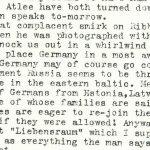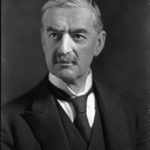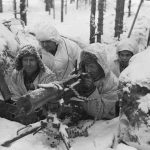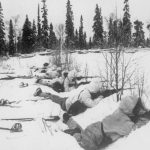On this date, Graham, and the rest of the country, were awaiting the response from Prime Minister Neville Chamberlain to the recent approach of Hitler to the situation in Europe; claiming to want peace. Chamberlain spoke to the House of Commons the following day and conveyed his opinion that it was not possible to trust Hitler. Although known previously for his appeasement policies, the reality of Germany’s actions over the preceding months lead to a determination from the Prime Minister to threaten continued retaliation in response and do everything possible to stop the events that had been set in motion.
He stated that the “repeated disregard of his word and these sudden reversals of policy bring me to the fundamental difficulty in dealing with the wider proposals in the German Chancellor’s speech. The plain truth is that, after our past experience, it is no longer possible to rely upon the unsupported word of the present German Government”. For the full parliamentary debate, see here.
Thomas then makes reference to the fact that the Soviet Union “seems to be threatening Finland”. This was an accurate observation, as a few weeks later, the nations embarked on the “Winter War” which would last until March 1940 and cause huge loss of life on both sides. The conflict ensued after the Soviet Union looked to obtain Finnish territory, making demands including that Finland cede significant border territories, primarily for the protection of Russian cities such as Leningrad. Understandably, Finland refused and were subsequently invaded. Finnish forces inflicted large losses initially, such as at Raate Road, but after a reorganisation and adoption of different tactics from the Soviets, they eventually prevailed.
This conflict was another, such as the previously mentioned Battle of Khalkin Gol in the spring of 1939, which would have a significant impact on the outcome of the global conflict overall. The Moscow Peace Treaty signalled the end of the Winter War, with Finland forced to surrender a high percentage of its territory, representing around 30% of its economy, to the Soviet Union. Despite this, the way in which the situation had been handled perpetuated negative attitudes internationally towards the country, and the substantial losses that they received fighting Finland decreased Western opinions on the strength and success of its military. Hitler in particular, was encouraged by events, and believed an attack on the Red Army could be possible, which he indeed ordered the following June; changing the course of history.
It also led to the Continuation War, whereby Finland concurrently launched an attack on the Soviet Union. There are many suggested reasons for this, but the main factor seems to have been the desire to reclaim the territory that they had lost in March 1940. Much of the Finnish government were unaware of the plans, with a small faction of leaders colluding with the Wehrmacht, and Germany supplying Finland with material and military assistance.
Graham finishes the entry by highlighting further actions of Nazi Germany: “Meanwhile Hitler is evacuating many millions of Germans from Estonia, Latvia etc. He announces that these unhappy wights, some of whose families are said to have lived undisturbed for 7 centuries are eager to re-join the Reich. One wonders what they would say, if they were allowed!”
The movement of peoples in these areas of Europe, often by force, was commonplace. Although Thomas is talking here about Germans being made to “rejoin” the homeland, a driving force of the Nazi party was the concept of “Lebensraum” (“living space”), which aimed to incorporate those lands into Germany itself to accommodate the “master race”.
This idea had been prolific since the 1890s, but was adopted in its most extreme form under the Nazi regime and provided justification for their territorial expansion. The consequences were devastating for indigenous communities who were removed either through mass deportation, enslavement or murder – such as in concentration camps. When also combined with the idea of racial superiority, this policy was even more dangerous for any individuals who were considered “non-Aryan”, which included entire Slavic nations, leading to the deaths of millions.
Sources used:
www.wikipedia.org
www.tavlisota.fi
www.theyworkforyou.com





